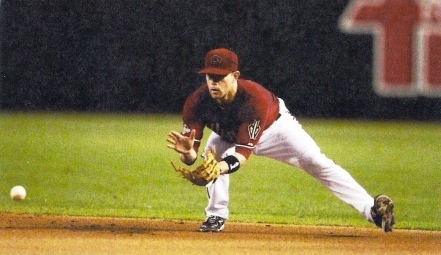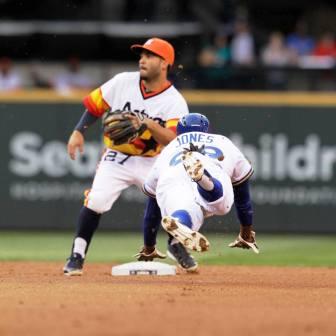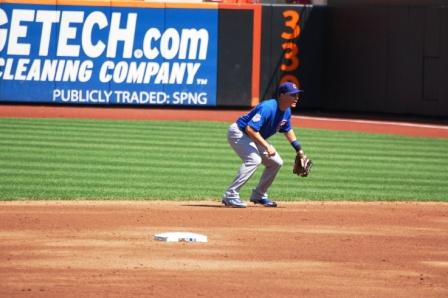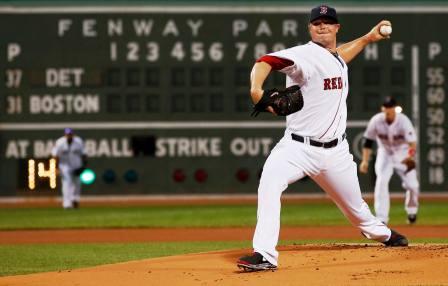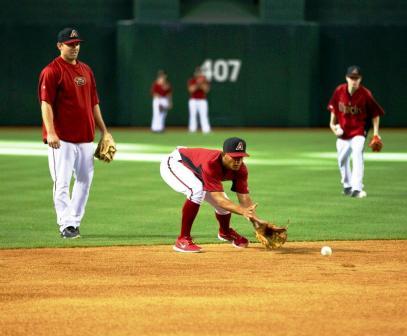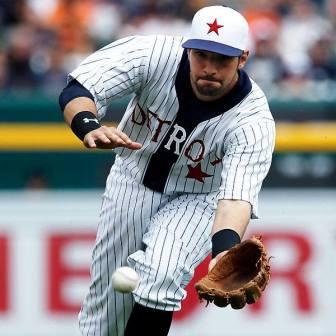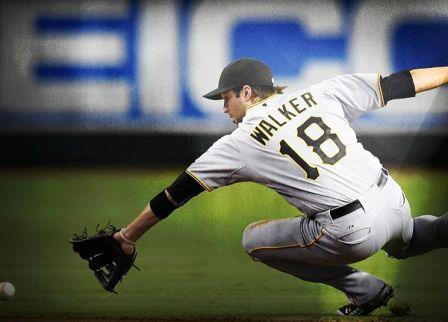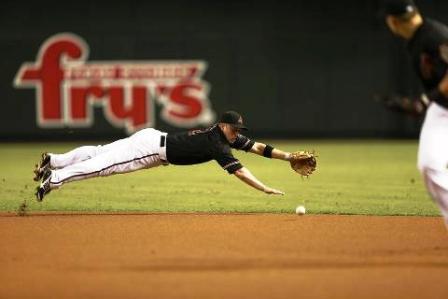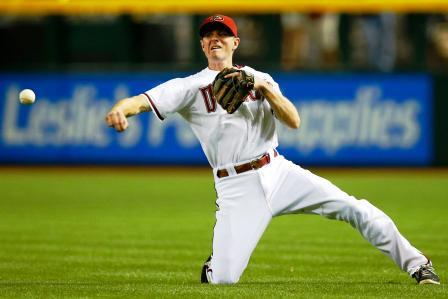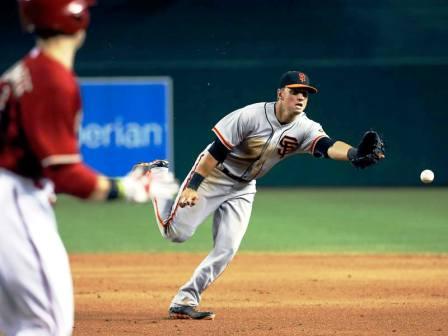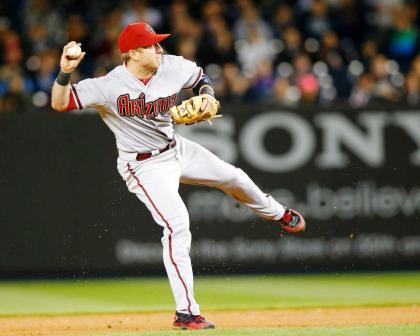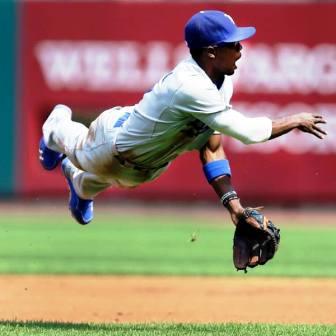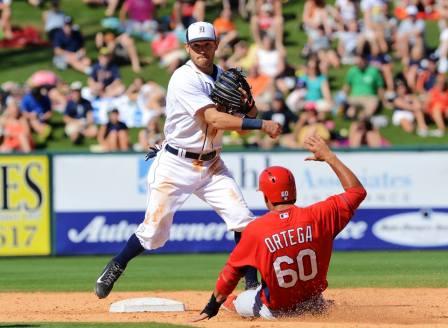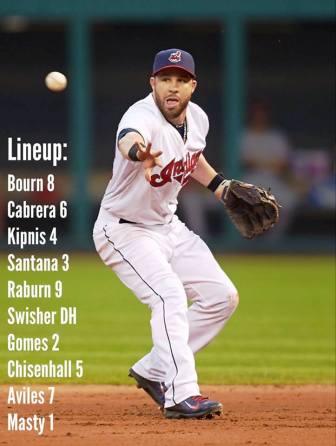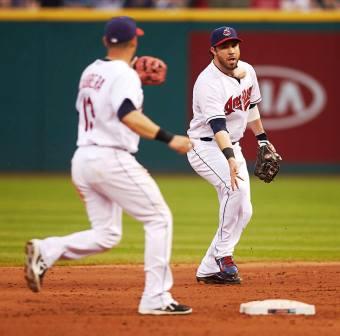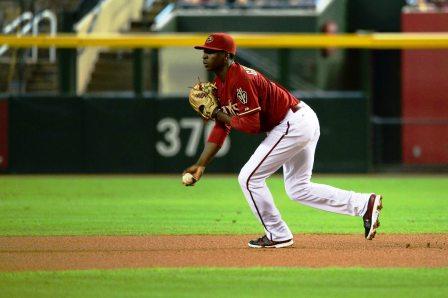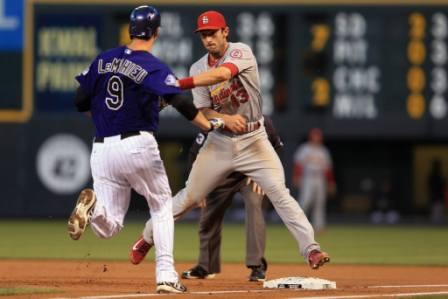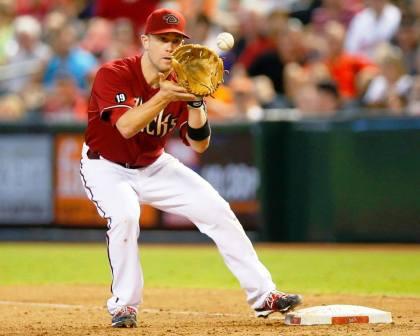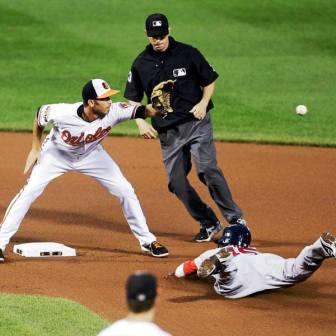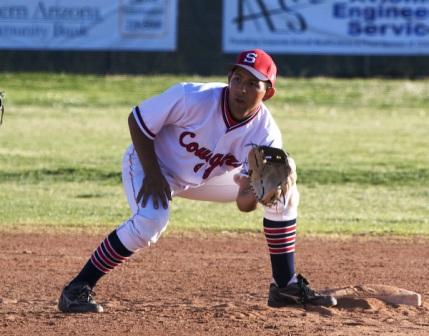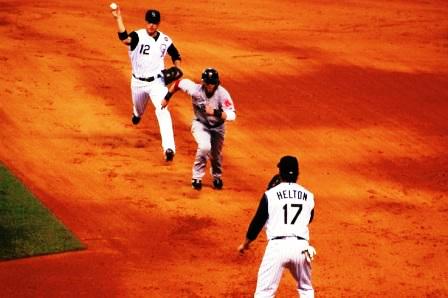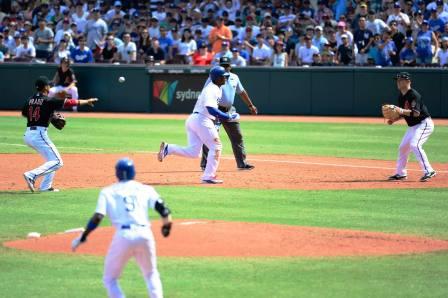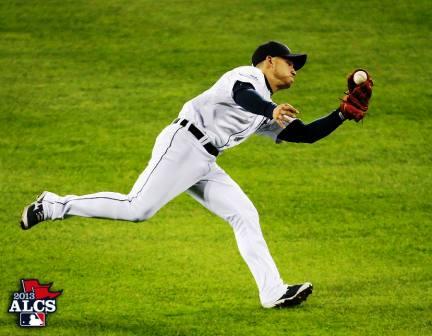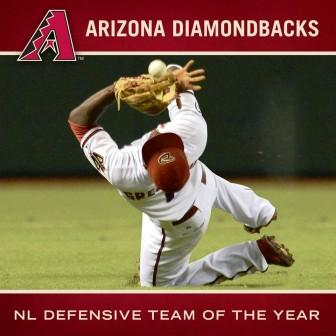 |
||||||||||||||||||||||||
Second Base Fundamentals ~ It's more than just ground balls and a short throw!Second base fundamentals, the tools that you will need to play this very interactive position. One of the five positions generally thought of as the building blocks of most baseball teams, building your defense strong up the middle, with your catcher, pitcher, shortstop, second baseman and center fielder, is always a good idea!
Your second baseman is essentially a shortstop, on the right side of the infield. If there is one difference, it may be in the shorter throw to first base from the second base position, compared to shortstop. That is certainly offset by the degree of difficulty making the throw to first, off of double play pivots and backhand groundballs behind the second base bag, that become bigger factors as players move up through the system. Let's take a look at the vast array of skills required to play this middle infield position. What Skills Are Needed?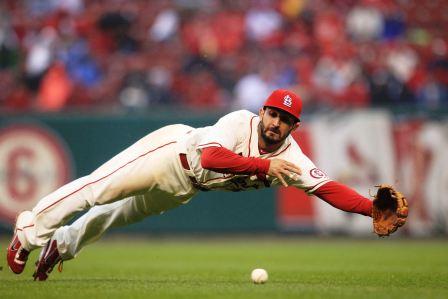
Ground BallsGround ball techniques are the same for all infield positions, feet spread a little wider than shoulder width, glove side foot slightly back, arms extended, knees bent(bent knees get your glove on the ground), head down, track the ball into your glove.
As you look at the images above, all types of body positions required:The constant in all images? Their eyes are focused on the ball. You won't catch what you don't see! Various Throwing PlatformsWhile it is true, you want to get your feet set, gain some ground and turn the ball loose, there will be many times in the middle of the diamond where your throwing platform becomes somewhat complex. Work outside of practice making throws from all manner of positions, then continue that work whenever the opportunity presents itself in practice. These throwing positions need to feel as natural as setting your feet, gaining ground and turning the ball loose. More times than you know, games will turn on your ability or inability to execute these throws
Double Plays ~ Feeds and PivotsDouble play feeds and pivots are essential. For both, you are looking to be quick, not fast. As it is with fielding ground balls, turning double plays requires that you look the ball into your glove. If you are the pivot end, get to the bag early and set up, that way you are able to adjust to any type of throw that comes your way. If you anticipate a bad throw, the good ones will be easy and you will be able to deal with those which are not so good. The basic pivot requires you to get quickly to the bag, square up to where the ball will be coming from, third base or shortstop, with your left foot on the bag. When the ball is thrown, step to the ball with your right foot, catch and throw. 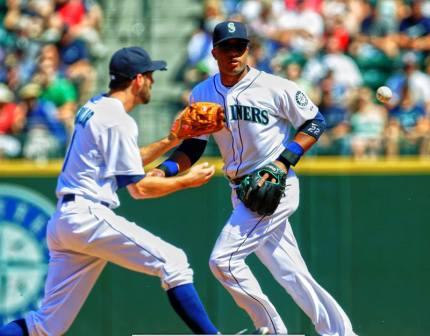 Attempt to turn double plays using both hands. If you think of your glove hand and your throwing hand as tied together with an 8 inch cord at the wrist, they will be in the optimum position for a quick and solid turn. Keeping them close allows you to get the ball in, and out of your glove quickly. You are looking to develop a process that is smooth and quick. While the image above is a shortstop, hand/glove relationship is the same at second base.
Covering First Base On BuntsAlong with knowing the bunt situations in which you will need to cover first base, time should be spent on your footwork around the bag at first. More often these plays will be close and you have the added factor of the runner to work with. Getting to the base as quickly as possible will alleviate some of the stress. As with a first baseman, wait on comitting to the throw until you see where it is going. Committing too soon can lead to being crossed up, and a poor throw getting by you, creating additional problems. The rule is ball first, bag second. Do whatever you need to do to keep the ball at first base, even it it takes you off the bag. As long as you keep the ball there, runners will not be advancing.
Steals and TagsThere are a couple schools of thought on positioning for tags. One is, straddle the bag, the second is set up on the front side of the bag. I personally like straddling the bag, as there is less of a tendency for wanting to reach out, catch the throw, then bringing the ball back to tag the runner. The thrown ball will get to the base faster if you let it travel. Catching it and making a tag is slower than letting the ball travel to the bag, catching it and applying the tag. You will see it done both ways, at all levels. Experiment with a stop watch and see which is faster. Do it enough times to get a true average for both options. Speed is what you are looking to gain.
RundownsRundowns are essential skills for all infielders. Teams have differing rundown philosophies, players need to adapt within the current philosophy. There are three basic philosophies for rundown situations, none of which is better than another. It comes down to a comfort zone for the coach in charge. The link above for rundown philosophies, will take you through each one. Unlike the "pickel" game you played in the back yard or park, you want to end this situation with a minimum of throws. The longer it takes, the more throws you make, chances of a defensive mistake become greater. See the situation, react to it, difuse and finish it!
Short Throw Outs at Second BaseWith two outs, you need to know where your "short throw out" will be. If it is your ground ball, then it would be at second base, with a runner on first, or first and second. If it is the shortstop's or third baseman's groundball, you are their "short throw" at second base. Think it through ahead of time, verbally tell them you will be there, or that you will be throwing there. If the ground ball takes you towards first base, make the adjustment and go to first with it. 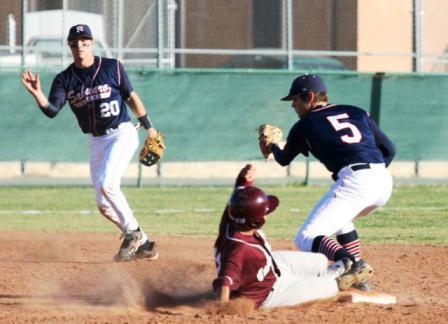 Cutoffs, Single and Double ~ Double Steals ~ Sacrifice Bunts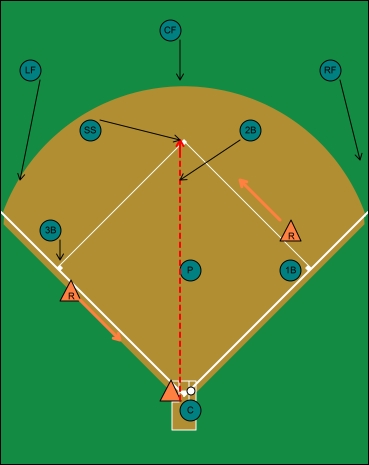
The links below will take you to the single and double cutoff, double steal and sacrifice bunt pages on the site. The diagrams, like the one at the right, are linked below, as well as from the topic site page. Pop Flies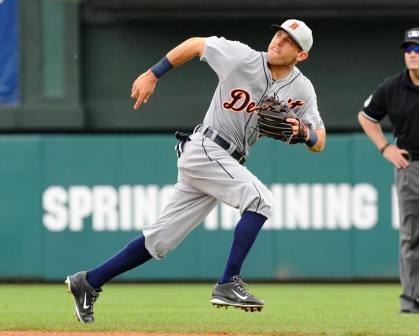 When a ball is hit in the air, to the right of second base, you should be looking to get there and make the catch.
Keep going until the outfielder calls you off. Don't assume he will get there. Communication is the key. The outfielder has the call over you, you have the call over the first baseman, pitcher. Pop flies behind the first baseman are balls you need to get to and catch. You will have a better angle, and can get better positioning than your 1B can. Work to get behind or around the ball if possible. Go and get it!
Holding Runners Looking at the image above, the 2B is in a great spot to hold the runner, as the pitcher comes set and checks him. As the pitcher finishes his look, the 2B can start back out to where he wants to be on the pitch, thus not giving up positioning to the hitter. Working base runners at second base is a shared responsibility with the shortstop; but only one needs to be active at one time. The common mistake you see is the 2B starting out too far away from second base, then making a series of fake starts to the bag, none of which will create any degree of worry for the base runner. Think of it in terms of starting out close enough to hold the runner's attention, eliminate the jumping and faking. If the runner doesn't have a lead you are concerned with, wait there as the pitcher checks the runner, then immediately move out directly for where you need to be on the pitch. The pitcher is waiting for you to start back before he looks to the plate and delivers the pitch. If you hang out, the pitcher loses his rhythm. Should the runner have a bigger lead than you or the pitcher would be comfortable with, run a timed pick on him. You will either pick him off, or you will get his attention and close him down some. It is essential that you do not take yourself out of your defensive position when the pitch is made. When you have a base runner, both middle infielders should be pinching the middle of the field on the catcher's throwback to the pitcher. You are naturally in the correct spot to start holding the runner, if it is your current responsibility. Hang out, work yourself back out, rather than starting from where you want to end up, working in, and then needing to get back out before the pitch. Pickoffs at Second BaseMost all pickoffs for the second baseman will be timing plays, either between you and the pitcher, or you and the catcher. There are times where the shortstop is included, where he will drag the runner back to the bag, as he starts back to his position, the pitcher looks to the plate and counts out his 2-3 second wait, spins and throws to the second baseman coming in behind the runner, who is getting back out into his lead. Plays like this are timed out so that the ball and the 2B get to the bag at the same time. 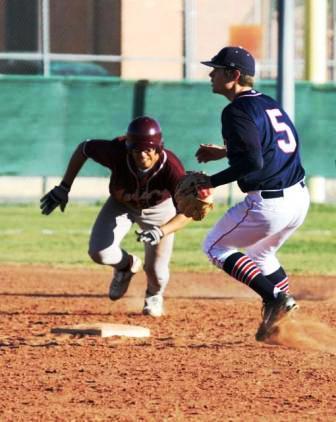 Second Base Tips ~ From the Dugout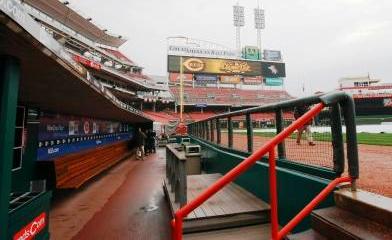

We should remember that with everything there is in the game of baseball, the thing there's the most of are outs. That makes it pretty important to catch the ball and know what to do with it after you've caught it.(Bill Rigney, New York Giants 2B)Additional Topics: Position Specific SkillsBaseball Infielders ~ Quick Hands and Feet First Base ~ Can Just Anybody Play This Position? Third Base ~ The Hot Corner And So Much More! return from second base fundamentals to the ole ballgame.com  | ||||||||||||||||||||||||
